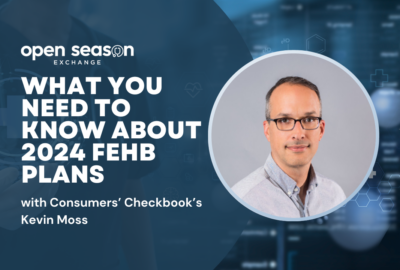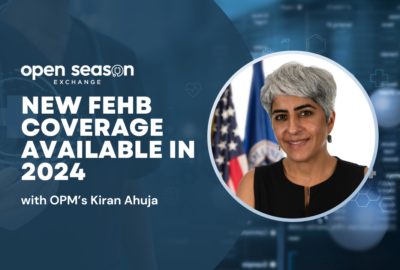Do your health care homework this weekend!
It's hard to go wrong in picking a FEHBP plan, but with a little homework you can make a good thing better
Did you know Rolls Royce makes an SUV? Getting one to your driveway will set you back at least a half million dollars. The Cullinan resembles a super-duper Suburban, except the back seat has a place to put champagne flutes.
I never saw one of these impressive cars, dubbed the Cullinan, until a couple of weeks ago. Spotted not in Beverly Hills, Scarsdale, New York or Great Falls, Virginia, but rather on the streets of Da Nang, Vietnam. Oddly, in 12 days of vacationing in that remarkable country, I saw more Rolls Royces than I’ve seen in a year here in the U.S. Even the national legacy of no less than Ho Chi Minh has its 1%.
Knowing Open Season for the Federal Employee Health Benefits Program was occurring, I asked a couple of local Vietnamese how they experienced health care in the relatively poor but fast-growing nation. They all said, essentially, “It’s great if you have money.”
In some ways that’s true everywhere. Nations from Vietnam to Great Britain have public (also called social) health care plans alongside private plans for those who can afford. Of course, you can find Rolls Royce-driving people everywhere, who can simply pay their own way. But few places, and certainly no private employers, offer the range of health care insurance plan options to which federal employees can pick from.
The U.S. healthcare and healthcare insurance system can be expensive, frustrating and ineffective at its worst. At its best, it provides one more incentive for millions to try and get into the U.S. And, just as the Thrift Savings Plan stands as a model for 401K-type plans, the FEHBP program might be about the best health-related benefit you’ll find anywhere. As someone with a pretty darn good union-provided plan, I’m jealous!
Anecdote: A close friend and neighbor, a longtime attorney in a federal agency, came down suddenly with a life-threatening illness a week ago. Within a day or two he’d secured appointments with specialists at elite healthcare delivery organizations in the D.C. region. No one can escape one’s maker’s ultimate plan, but under the FEHBP you’ve got better odds than most of the people on Earth, including those who, to this day, crouch in the rice paddies of Southeast Asia.
That’s why I’d like to urge you, between now and Monday, when Open Season concludes, to do the research necessary to make sure you have the best plan at the best price for you and, if applicable, your dependents. I say this because of the single-digit percentage of employees who actually do switch in a given year.
Yes, premiums are up this year by nearly 8% on average, after rising nearly 9% last year. Increases don’t occur across the board, though. At least one plan is down by 50%, according to Kevin Moss, the editor of the Consumers Checkbook Guide to Health Plans for Federal Employees. He spoke at the recent Federal News Network Open Season Exchange.
Besides replacing what you have for less money, Moss said switching from, say, self-plus-one to each of a couple having single plans can also save money.
“It may be that one plan works better for one spouse, and another plan works better for another spouse,” he said. Just be sure to take the deductibles into account when making the calculus.
As the Office of Personnel Management noted, the number of choices of plans fell for 2024. But the numbers— 271 plans down to 156 — look more dramatic than the reality. Which is, Humana and a few smaller providers pulled their HMO (health maintenance organization) plans from the federal market, Moss said. People that were in those plans have to choose. Otherwise OPM will put you in the lowest-cost national PPO (preferred provider organization) plan, GEHA Elevate. That’s a fine plan. You have other options, but you’ve got to do a little homework. As Moss put it, you want to maintain control over your choice of healthcare insurance provider.
Another thing to keep in mind: A plan you might have liked wasn’t offered in your area. Check again. It may have spread. For example, Moss pointed to a Kaiser Permanente plan in Colorado that added two counties for next year. Sentara Health expanded from Newport News, Virginia to Northern Virginia. Moreover, you might be able to choose new options from existing offerors. For example, Moss said, Compass Rose will offer a new standard plan.
You get the idea. Among our Exchange, the Consumer’s Checkbook Guide and the materials from OPM, there’s plenty of information out there. Use it to make a good thing better.
Nearly Useless Factoid
By: Daisy Thornton
One of the most expensive coffees in the world originated in Vietnam. Kopi Luwak, also known as weasel coffee, can cost up to $3,500/kg. It’s so expensive because the process is labor intensive: The coffee cherries are actually eaten and partially digested by an Asian palm civet, a type of weasel. The cherries are partially fermented during the digestion process, changing their flavor. Farmers then gather the beans from the feces, clean them, and continue the roasting process.
Source: Culture Trip
Copyright © 2024 Federal News Network. All rights reserved. This website is not intended for users located within the European Economic Area.
Tom Temin is host of the Federal Drive and has been providing insight on federal technology and management issues for more than 30 years.
Follow @tteminWFED






